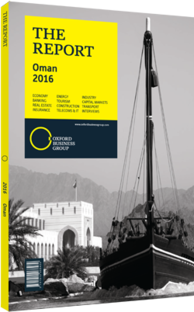Paul Sheridan, Managing Partner, Dentons, on foreign direct investment in Oman: Viewpoint

The goals of Oman’s current long-term strategy, Vision 2020, are to support growth, diversify away from oil and gas, and create employment opportunities for Omanis. Attracting inward foreign investment is a major factor in achieving these goals. Oman’s current legislation on foreign investment (the Foreign Capital Investment Law, or FCIL) was enacted by Sultani Decree 102/1994, although its roots go back to predecessor laws dating from the 1970s. Certain aspects of the FCIL were amended in 1996, 2003 and 2010, but its basic regime of foreign investment control has remained unchanged, in fact for longer than the lifetime of the young Omani job-seekers now competing for opportunities in the private sector.
Essentially this regime requires that any foreign investment be approved in advance, and carried on through an Omani commercial company that serves as the investment vehicle. This approval – known as the tarkhis – confers simply the right to make the foreign investment, and, even when it is granted, the investment project still has to obtain registration on the commercial register and as well as any other licences, permits, registrations and clearances specific to the economic activity proposed to be carried on. In some cases, the basic regime can be by-passed in whole or in part, for instance by locating the investment project in one of the special economic or free zones, or by investment on the basis of treaty rights under the GCC agreements or Oman’s other bilateral investment or free trade agreements. However, the basic feature of the ordinarily applicable regime is ex ante approval on what is effectively a case-by-case basis, at the discretion of the authorities.
Historically the purpose of this regime was paternalistic: to protect Omanis and the resources of their country from foreign exploitation. With the present-day sophistication of the Omani commercial community, the need for this degree of protection has significantly diminished, and the ex ante approval process is now seen as a positive disincentive to potential foreign investors. Here, Oman suffers particularly by comparison with its neighbours in the UAE. The government is accordingly consulting on reform of the FCIL.
A major proposal now being canvassed is the reversal of this basic regime: the ex ante approval process for entry to the Oman market would be abolished, and a foreign investor would instead be entitled to market entry on the same basis as a national investor – other than in respect of any economic activity specifically reserved for Omani nationals exclusively, or reserved for entities with a stated minimum Omani participation. This reserved list of activities would be determined by the Council of Ministers, and publicised with full transparency. Mandatory Omani participation in foreign investment project companies would therefore become the exception and no longer the norm. The door would be open generally to wholly foreign-owned businesses in Oman. The significantly higher rates of minimum capitalisation levels hitherto required for project companies with foreign investment would be a thing of the past.
A reform of the rules on market entry would also provide the opportunity to enact a modern foreign direct investment law along the lines dictated by international best practice and expected by international investors. There could, for instance, be explicit statutory acknowledgement of customary international law principles such as “fair and equitable treatment”, and “full protection and security” provisions on how the right to compensation for expropriation is to be put into effect in practice. Liberalisation of market entry to Oman would need to be accompanied by supporting developments in related areas. One would be to improve the processes for obtaining commercial registration and activity-specific permits. There are current proposals for an enhanced one-stop shop, with substantial use of online processing.
You have reached the limit of premium articles you can view for free.
Choose from the options below to purchase print or digital editions of our Reports. You can also purchase a website subscription giving you unlimited access to all of our Reports online for 12 months.
If you have already purchased this Report or have a website subscription, please login to continue.

